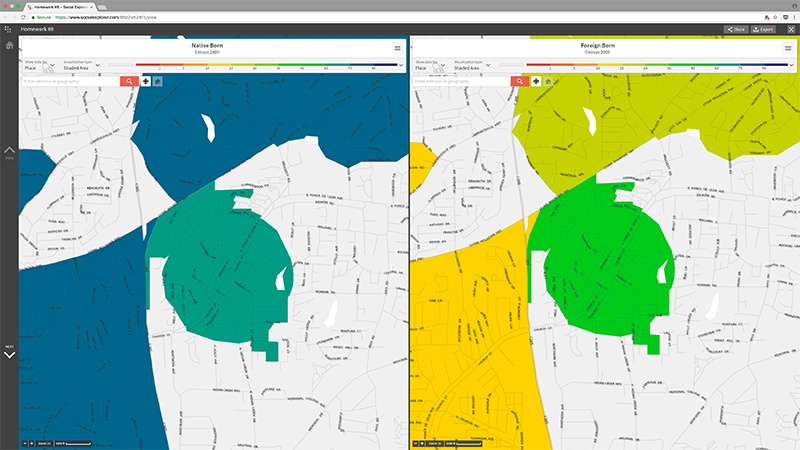This grant aims to use the Syrian refugee crisis as a case study to both educate Tech students about a particular global problem and to empower them as producers (rather than consumers) of pedagogy and scholarship by generating projects about the Syrian refugee crisis using the tools and innovations of digital humanities. Ultimately, these projects will be made available as resources that can be used as lesson plans about the Syrian refugee crisis in Georgia public middle school classrooms. Additionally, lessons learned from this early start up phase of the project can hopefully be leveraged into a larger grant to develop a comprehensive resource on the Syrian refugee crisis for educators.
Results of Phase I

The first part of the project was implemented in July as part of HTS 2041 History of the Modern Middle East. We devoted the last week of class to the Syrian refugee crisis, including bringing in guest speakers from New American Pathways, a refugee resettlement group headquartered in Atlanta and an Iraqi refugee who now works helping to resettle more recent Syrian arrivals. The initial assignment was to complete group timeline project on the Syrian refugee crisis using JS Timeline, an open source tool for creating multi-media timelines. However, some of the groups wanted to pursue topics we had covered during earlier parts of the course and I allowed them to do that.
I also asked each group to write a short essay reflecting on the process of constructing their timeline including an evaluation of the JS Timeline tool. In many respects, this proved the most interesting part of the assignment as it showed students grappling critically with the challenges and possibilities of using Timeline JS and provided a window on the analytical choices they made in order to construct a historical narrative. Here are some of their comments:
“Timeline JS was an interesting medium for portraying information, but it limits the amount of resources that can be used to support the arguments or information. Timeline JS only allowed for one media source to be used per slide, and it also made it difficult to use interactive sources or statistics tables in tandem with media. The timeline also forces the events to be described in a brief, concise manner, which can be disadvantageous when reviewing important and in-depth events or figures that require context or analysis along with basic descriptions.”
“When using Timeline JS, we found that it was fairly easy to use, and the setup of the spreadsheet made it clear where all of our information was supposed to be placed. Timeline JS is a very useful software due to its capabilities of creating the timeline for you. For the most part we had no troubles with the program…Overall, our experience with Timeline JS was a very good experience as the program was easy to use, and it definitely helped make this project a lot easier than it could have been.”
“We found we could have done a lot with this project given more time and a different format in which to present it….The issue of the timeline was having to put everything in with a specific date…..We also felt the use of a timeline for this project hindered our ability to talk about the more interesting points of this conflict and the varying opinions on what happened, which side was more legitimate in their fight, and other points of historical disagreement surrounding the conflict. By using the JS timeline, we had to abide to a set of instructions that restricted our choices. Therefore, our narrative ended up being fairly broad, simply outlining the conflict more than analyzing it instead of including more information on differences.”
